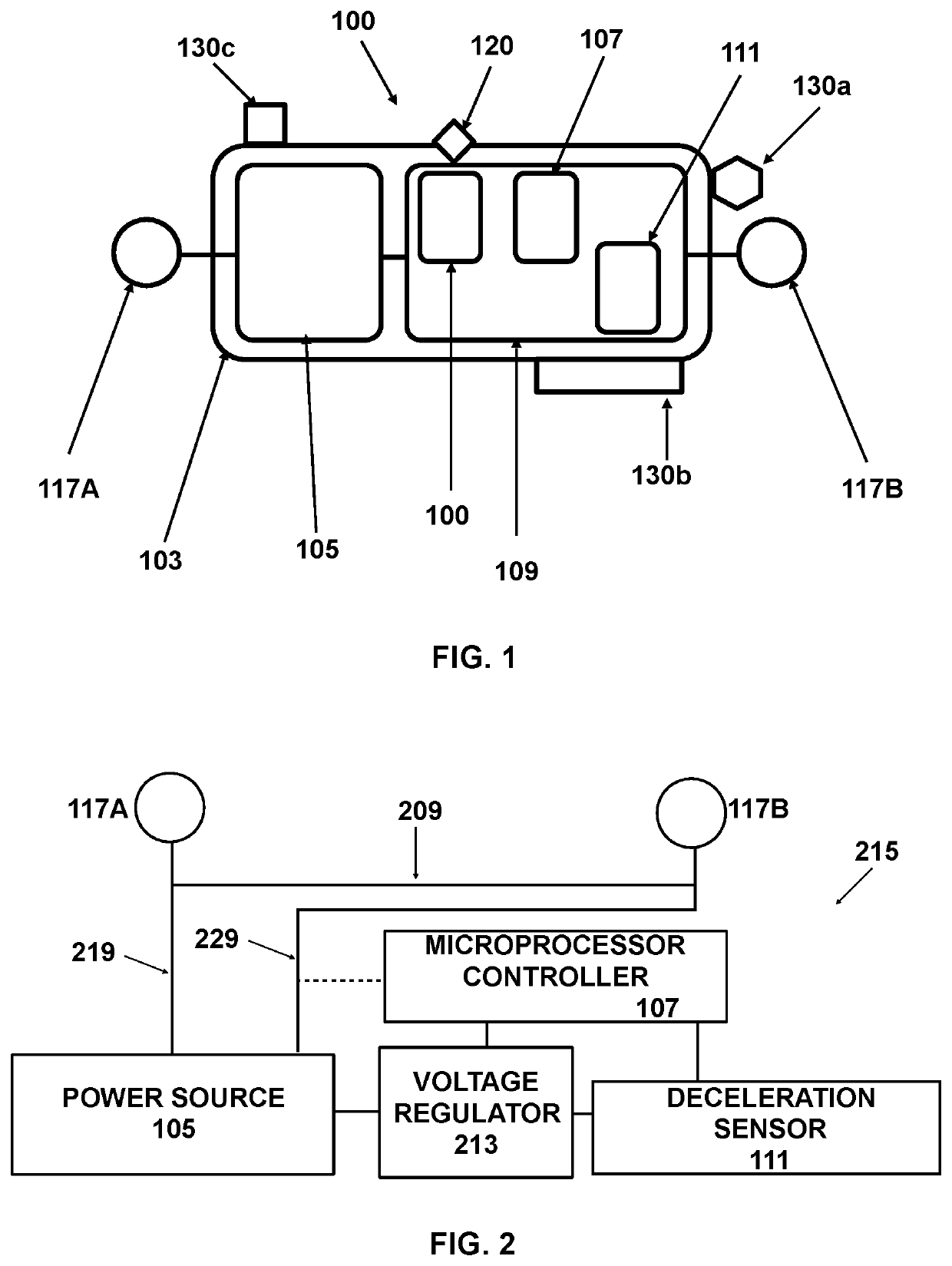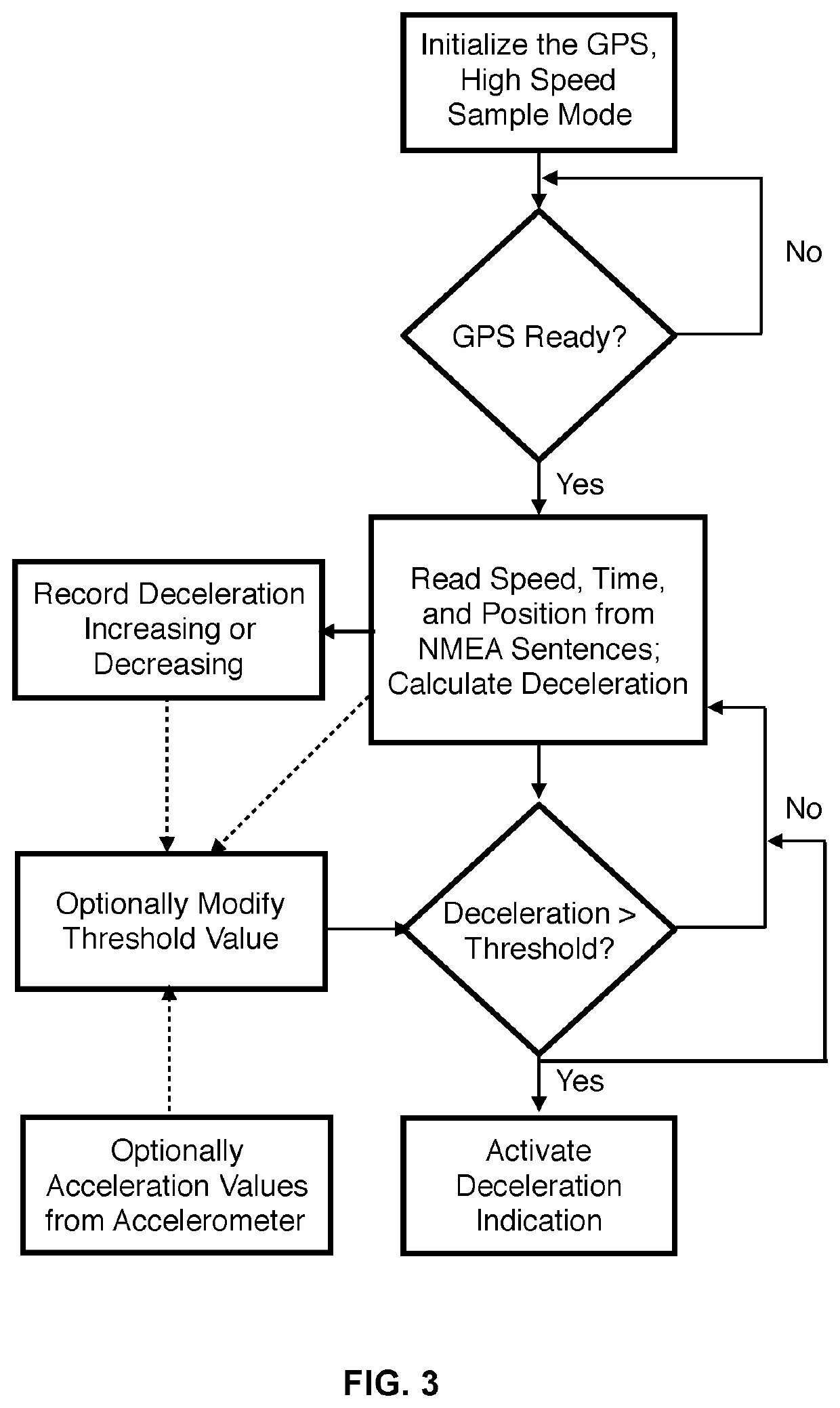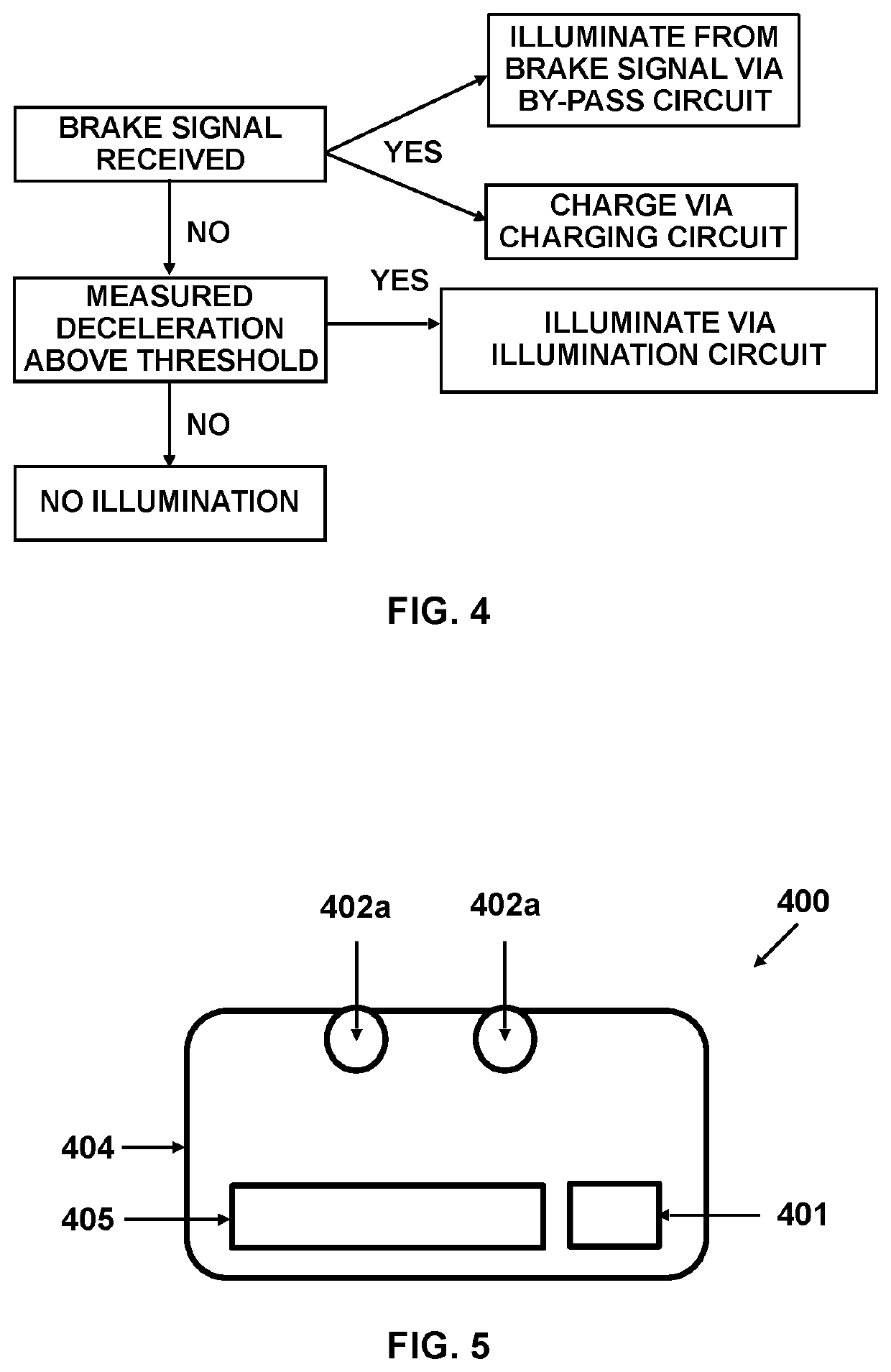Deceleration-triggered automatic brake indication
a technology of automatic brakes and deceleration, which is applied in the direction of cycle equipment, program control, instruments, etc., can solve the problems of erroneous deceleration measurement, inability to obtain accurate deceleration measurement, and production of erroneous deceleration measurements, so as to improve the safety of slower moving electronic-mobility vehicles, reduce false positive indications, and improve deceleration detection and measurement
- Summary
- Abstract
- Description
- Claims
- Application Information
AI Technical Summary
Benefits of technology
Problems solved by technology
Method used
Image
Examples
Embodiment Construction
[0038]As used herein, a brake lamp may comprise any number of LEDs, incandescent, and / or other types of light bulbs. A brake lamp may comprise a combination of one or more tail lights with one or more brake lights. Brake lights may also be referred to as stop lamps. A brake lamp may also be a high mount or center high mount stop lamp, which may also be referred to as a third brake light. A brake lamp may be present in a powered vehicle such as an automobile, motorcycle, truck, snowmobile, or watercraft or a brake lamp may be present in a trailer designed to be pulled by and electrically connected to an electrical system of a motorized vehicle.
[0039]As used herein, a “portable sensor unit” is a sensor unit that designed to be reversibly and temporarily mounted to a vehicle in such a way that the acceleration forces experienced by the vehicle are also experienced by the sensor unit. A portable sensor unit does not require an electrical connection to a vehicle electrical system for pow...
PUM
 Login to View More
Login to View More Abstract
Description
Claims
Application Information
 Login to View More
Login to View More - R&D
- Intellectual Property
- Life Sciences
- Materials
- Tech Scout
- Unparalleled Data Quality
- Higher Quality Content
- 60% Fewer Hallucinations
Browse by: Latest US Patents, China's latest patents, Technical Efficacy Thesaurus, Application Domain, Technology Topic, Popular Technical Reports.
© 2025 PatSnap. All rights reserved.Legal|Privacy policy|Modern Slavery Act Transparency Statement|Sitemap|About US| Contact US: help@patsnap.com



